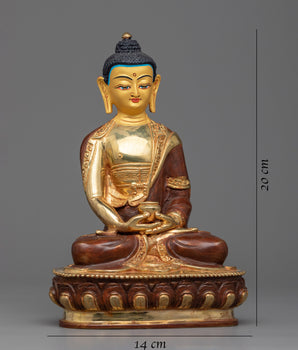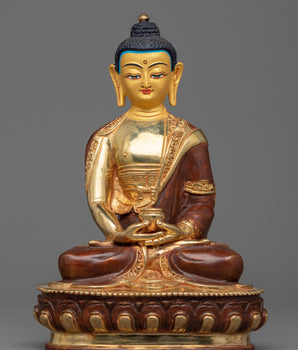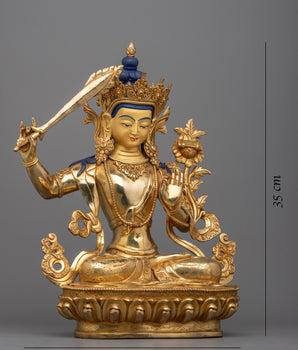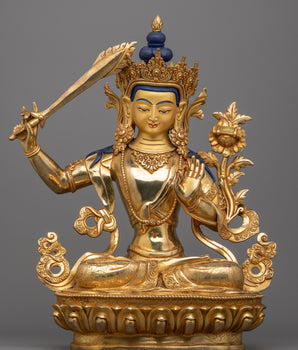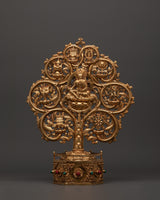
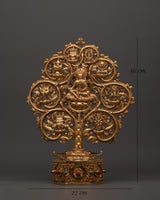
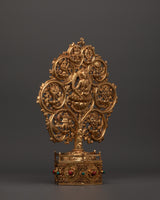
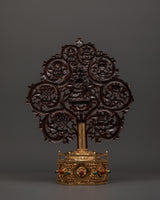
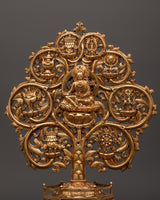
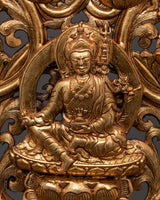
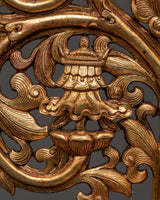
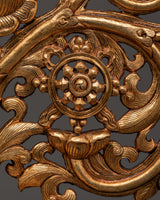
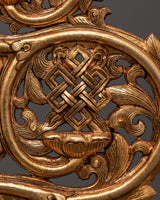
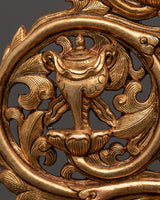
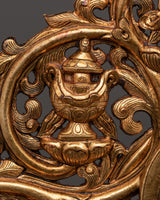
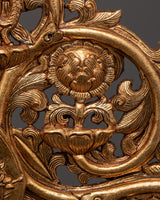
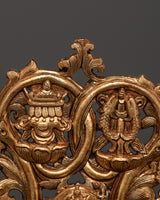
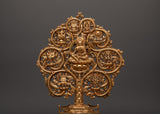
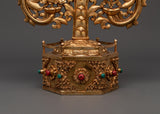
Sacred Guru Rinpoche with 8 Auspicious Symbols | Tibetan Deity Figure

100% AUTHENTIC

HANDMADE

FREE SHIPPING
Sacred Guru Rinpoche with 8 Auspicious Symbols | For Meditation and Spiritual Blessings
-----------------------------------------
Size: 36cm (Height) x 27cm (Width)
Weight: 1.04kg
Materials: Copper body, Gold plated
-----------------------------------------
About Our ritual item :
This Sacred Guru Rinpoche, adorned with 8 Auspicious Symbols, is beautifully crafted in copper and gold-plated for a shining glow. This Tibetan altar god sculpture stands 36 cm tall and 27 cm wide, exuding a presence and reverence. Guru Rinpoche, also known as Padmasambhava, is considered the Second Buddha in Tibetan Buddhism. His wisdom and energy are thought to eliminate impediments, promote healing, and facilitate spiritual transformation. The statue is surrounded by the Eight Auspicious Symbols (Ashtamangala), which enhance its strength as a spiritual decorative item and meditation companion.
The 8 Auspicious Symbols are the Parasol (protection from harmful forces), Golden Fishes (liberation and good fortune), Conch Shell (awakening and truth), Lotus Flower (purity and spiritual awakening), Victory Banner (victory over negativity), Vase of Treasures (abundance and long life), Dharma Wheel (the path of enlightenment), and Endless Knot (eternal harmony and interconnectedness). These sacred symbols, intricately etched around Guru Rinpoche, highlight the piece's spiritual significance and ornamental brilliance. This Tibetan copper and gold-plated figure is ideal for meditation rooms, Buddhist shrines, or as a thoughtful gift. It represents serenity, knowledge, and spiritual power.
Introduction To The 8 Auspicious Symbols :
The eight auspicious symbols are identified as framing the body of the Buddha in Tibetan tradition, with the parasol representing his head, the golden fishes his eyes, the lotus his tongue, the treasure vase his neck, the wheel his feet, the victory banner his body, the conch his speck, and the endless knot his mind.
In Hinduism, they are known as Ashthamangala, which also has significant spiritual significance. Ashtamangala is widely used at the entrance above the door by Hindu practitioners to ward off harmful spirits and attract positive energy at home, as well as for the same purpose in work or office spaces.
How to Set Up Your Buddhist Shrine?
• Find a clean, quiet, and uncluttered spot
• Set up an altar table, and cover it with an altar cloth that calls to you
• Place your sacred item at the center




















